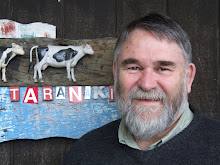
"
Nothing new happens without creativity'" according to Dave Owens. "Social change won't happen without creativity. Its a constantly manifesting thing. You learn one thing that will invariably lead to something else which changes what I thought before and leads to something else that leads to something else. And even after you have got something focused and complete you realise the question you've been trying to answer may not even be there anymore. It might have shifted as well. I'm working on a creative project that is a way of encouraging men - new fathers - to be more engaged with their infants - that's what I discovered its about after about 6 months of wanting to influence the way children are brought up. I'm trying to change men's attitude about fathering. Fathering is a fun, challenging and creative thing to do. So that's a project and I can tell you its become a major thing. I've created an organisation called Great Fathers - with an advisory group around the country. I was thinking I wanted to create a resource - a musical resource - to engage men in the art of fathering. I'm a musician. I love music and I know how it affects me. You can enter people's minds musically in a way that you can't otherwise enter them. You can say things to them through music that they wouldn't necessarily hear of you told them. The idea is to get New Zealand musicians to record their experiences of fathering. And its beginning to get there."This conversation with Dave explored with great passion the ways and means of bringing this project to fathers in New Zealand. This blog doesn't do the conversation justice so watch out for Great Fathers. Dave has another creative outlet and that is writing and his first novel is underway. Lets hear a little from Dave about his process of writing.
"I decided when I finished with the Jobs Letter - I'd been writing for it for a number of years - I said I'd give myself 3 months to get a sense of the next thing. I decided I would write a novel. I've always put my money earning to the front and my creative interests to the back. Well I thought I'd turn that around this time and I'll actually write this novel and whatever else I do will just have to fit around it. And it has. Everything else has fitted around it. Its amazing. Its like I made this commitment and within weeks it started coming to me and I wasn't in the financial problem I thought I was going to be in. It is just amazing.
When asked how one starts to write a novel Dave's response took me a little by surprise.
"I had a dream- a compelling exciting dream - of the last scene. I woke up with it absolutely clear in my head. I don't know what I dreamed before that. There are these two characters at the end - I've just gone back from there."
Discipline is important to Dave. "I start writing when I get up in the morning.I just get up and start. If I go as far as 2 I'm incapable of any interaction. If I knock off at 12.30 or 1 I still have some juice left for something. I've done that for at least 9 days a fortnight since April 07."
The conversation moved to the process of editing - from the creative to the analytical. "The idea of dialogue - its a very creative space to be in. I realised with the writing project I've not really discussed it in detail with anyone. The creative process - fine - but I realised that I've sort of created my own group around this. The first one is me reading through, then the second one was me reading through it 14 months later - I'm quite a different person. Ive got a second person going through it. Now I'm this 3rd person. I've got this group and its all me. At some point - and I thought it would be after this version - but I think I will go through it once more, then I'm keen to get a few other people involved in it. Its another important step that I can't ignore.
I asked Dave what advice he would give to others about becoming more creative. "I'd say eliminate your distractions primarily. Accept that you are a creative person. There is probably no-one that isn't. Accept that you have the responsibility to be creative. Its your duty - to get through life without being creative is sad. Collaborate with other people. Don't get too fixed on the outcome - it is likely to change. Time and space is important to me. I built myself a nice room to work in. I've got a nice big screen MAC. I screen all my calls. I don't answer the phone till after 1 o'clock. You have to decide what you value."
Thanks and good luck with the Great Fathers project and your novel Dave.
 Jonathan Milne founded the Learning Connexion some twenty years ago. He wrote Go! The art of change last year. The book encapsulates his philosophy of creativity and the central place the arts have in developing it.
Jonathan Milne founded the Learning Connexion some twenty years ago. He wrote Go! The art of change last year. The book encapsulates his philosophy of creativity and the central place the arts have in developing it.





















